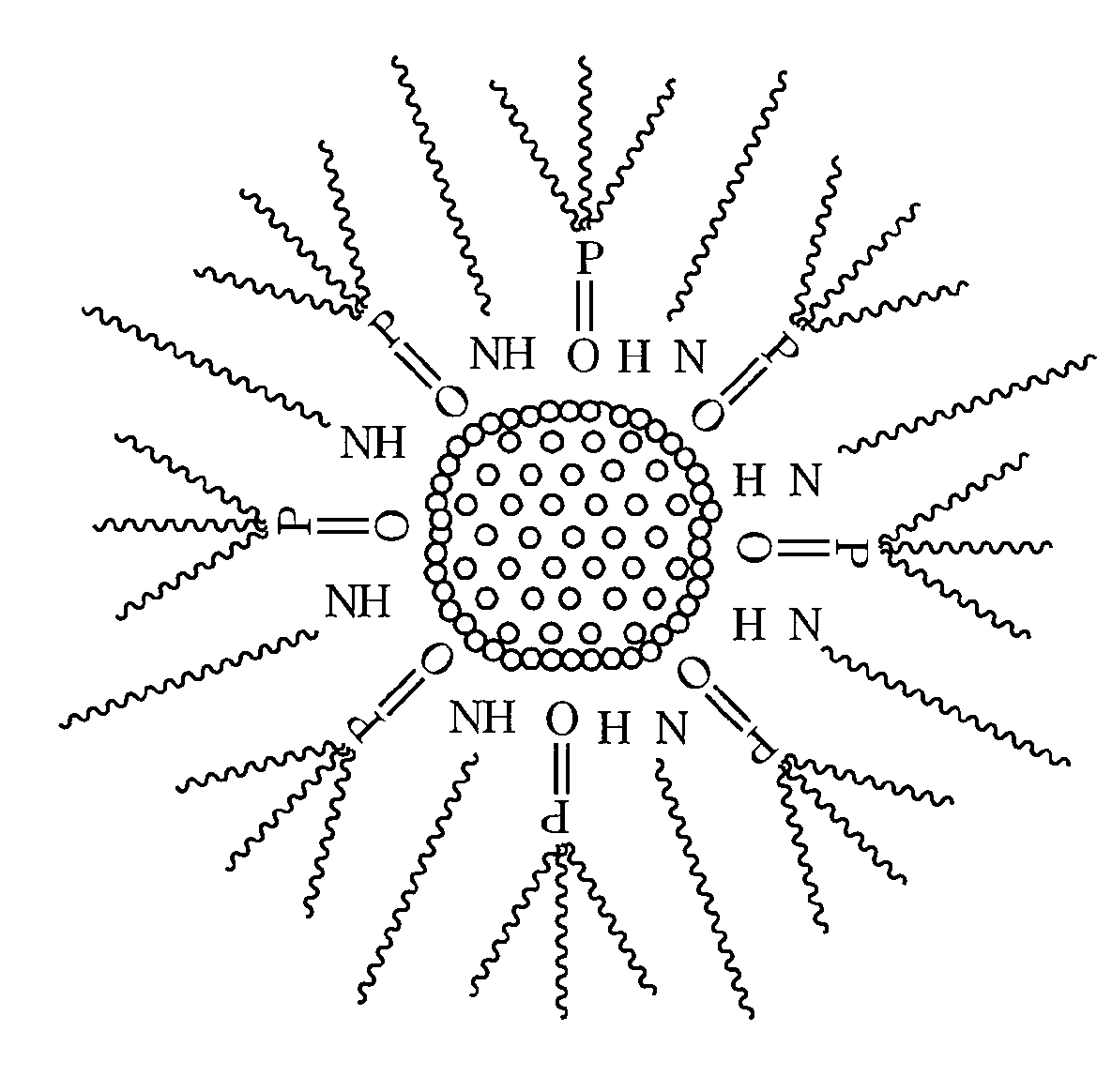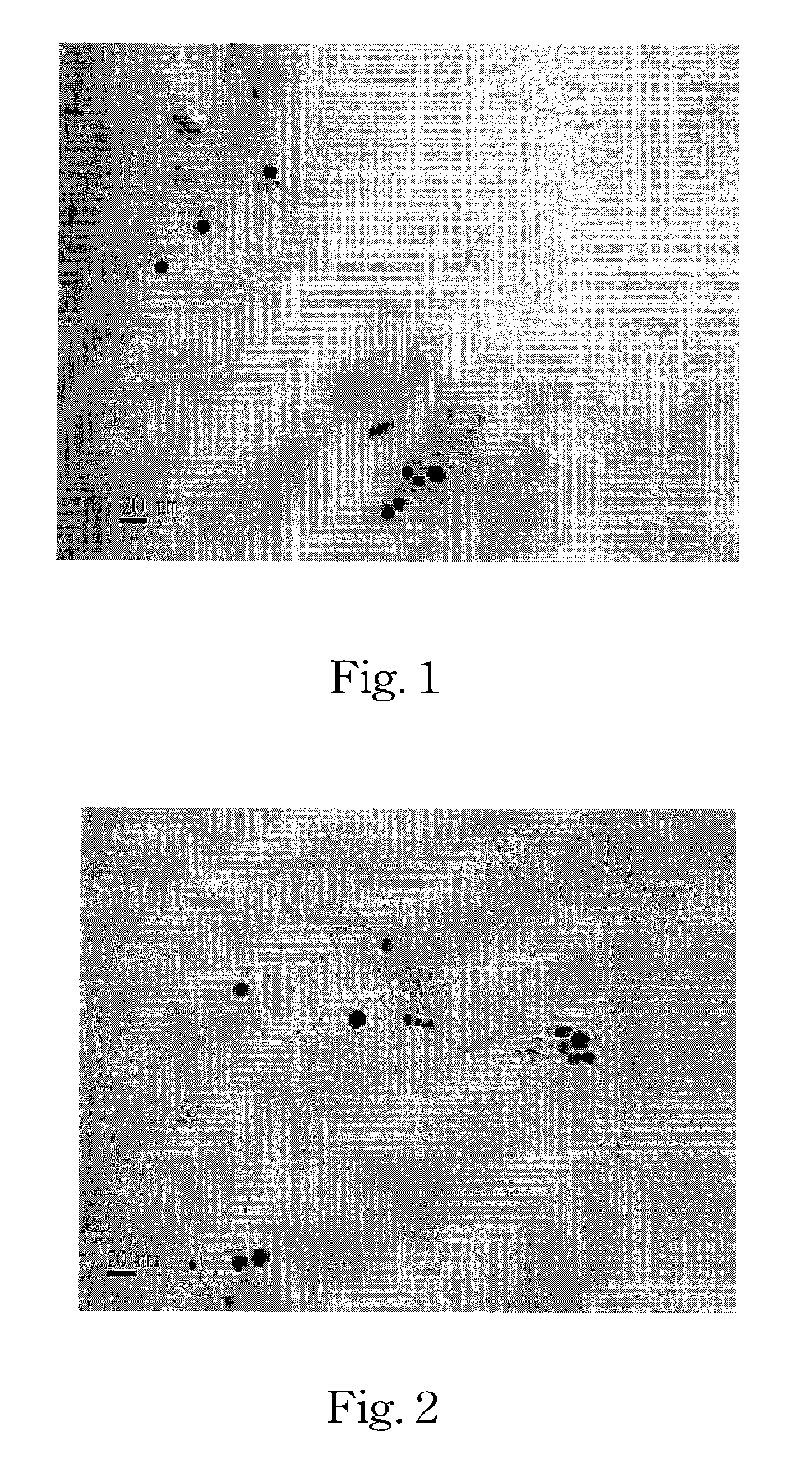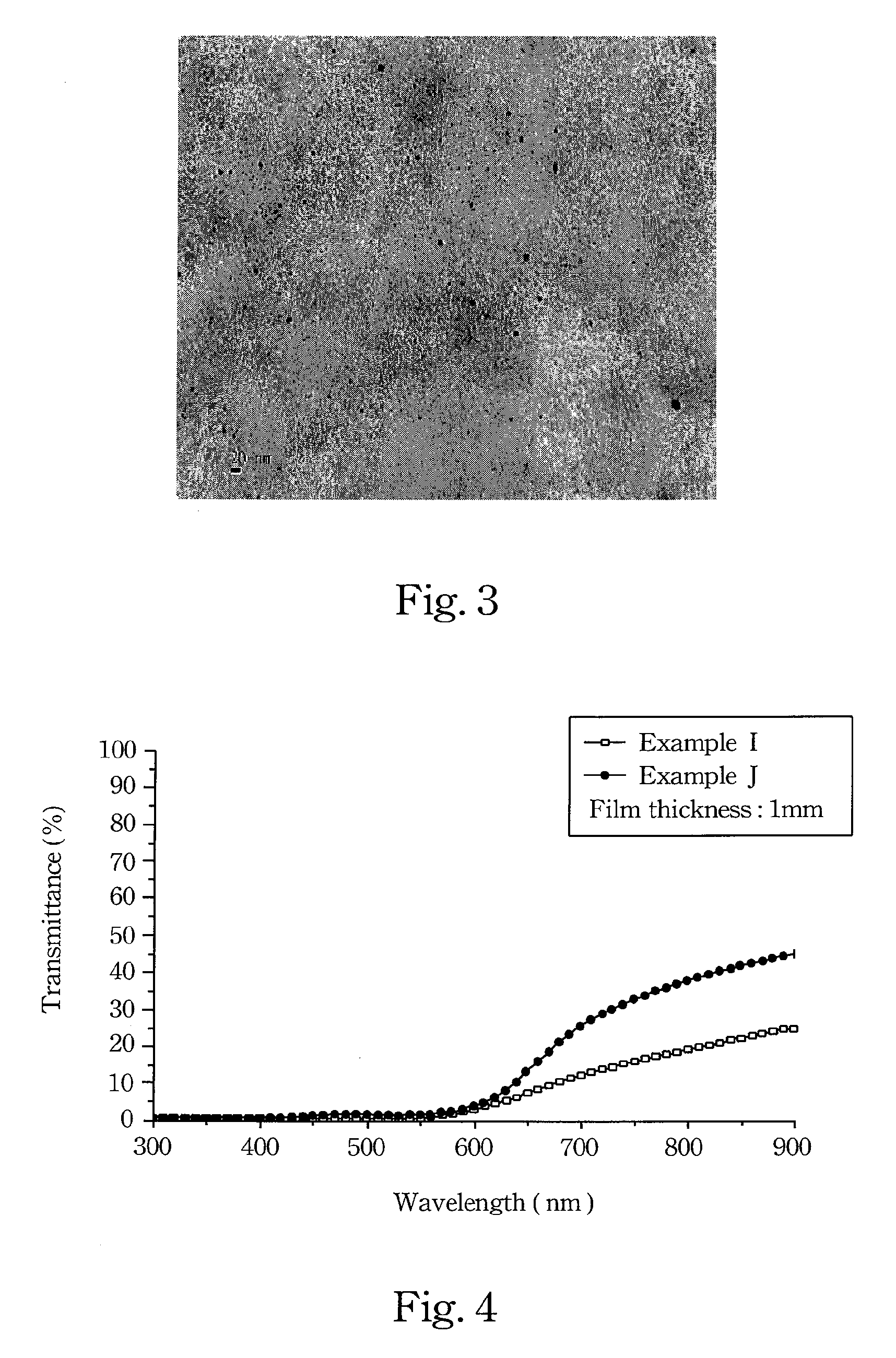Color Photoresist with Gold Nanoparticles and Color Filters Made Thereby
a color photoresist and gold nanoparticle technology, applied in the field of color photoresist, can solve the problems of reducing the light transmittance of the photoresist, not increasing the color purity, and excessive quantity of pigments
- Summary
- Abstract
- Description
- Claims
- Application Information
AI Technical Summary
Benefits of technology
Problems solved by technology
Method used
Image
Examples
embodiment i
Reducing Gold Ions to Form Gold Nanoparticles for Red Photoresist
[0033]In this embodiment, following steps were performed so that the gold ions are reduced into gold atoms:
[0034](a) HAuCl4.3H2O (hydrogen tetrachloroaurate(III), trihydrate) was dissolved in tri-n-butylphosphine (TBP);
[0035](b) tri-n-octylphosphine oxide (TOPO), hexadecylamine (HDA), and sodium borohydride (NaBH4) were added into a reaction flask filled with nitrogen or argon under stirring and heated to 190° C.;
[0036](c) the TBP solution from step (a) was added into the reaction flask of step (b) under stirring thereby producing a solution of dark red, the reaction flask was kept at 190° C. for tens of minutes and then naturally cooled to 90° C.;
[0037](d) toluene was added into the reaction flask of step (c) so that the gold nanoparticles formed were extracted into toluene.
[0038]There were eight examples (Examples A-H) conducted according to the method of this embodiment. The final toluene solution systems obtained a...
embodiment ii
Preparing the Mixture of Acrylate Monomers and Gold Nanoparticles
[0041]In this embodiment, the gold nanoparticle-containing toluene solution from the Examples A-H of Embodiment I was further mixed with acrylate monomers and a photo-polymerization initiator. The acrylate monomers in this embodiment could be at least one of ethoxylated bisphenol A dimethacrylate (Chemical Formula I, available from Sartomer Company, Inc., catalogue No. SR-348), tricyclodecanedimethanol diacrylate (Chemical Formula II, available from Sartomer Company, Inc., catalogue No. SR-833S), and tri(2-hydroxy ethyl)isocyanurate triarylate (Chemical Formula III, available from Sartomer Company, Inc., catalogue No. SR-368). The photo-polymerization initiator in this embodiment could be Irgacure 651 (Chemical Formula IV, available from Ciba Specialty Chemicals) or Irgacure 184 (Chemical Formula V, available from Ciba Specialty Chemicals).
Chemical Formula I: Ethoxylated bisphenol A dimethacrylate, Sartomer SR-348
[0042...
embodiment iii
Manufacturing the Thin Film of Red Filter
[0051]In this embodiment, the sticky red mixtures from the Examples I-T of Embodiment II were coated over glass substrates. The thickness of the mixture coating is about 1 mm or about 0.25 mm. Both sides of the glass substrate were irradiated by a light source with a wavelength of 365 nm so that a red the thin film could be formed over the glass substrate. Transmission spectra of the thin films manufactured according to this embodiment are shown in FIG. 4, FIG. 5 and FIG. 6.
[0052]FIG. 4 is transmission spectra of two thin films formed from the mixtures of Example I and Example J of Table 3. The mixtures were respectively coated on a glass substrate The coated substrates were exposed to light to form the thin films with a thickness of about 1 mm. The thin film formed from Example I (the thin film I) and the thin film formed from Example J (the thin film J) only differed in the selection of the photo-polymerization initiator. As could be seen i...
PUM
| Property | Measurement | Unit |
|---|---|---|
| size | aaaaa | aaaaa |
| size | aaaaa | aaaaa |
| size | aaaaa | aaaaa |
Abstract
Description
Claims
Application Information
 Login to View More
Login to View More - R&D
- Intellectual Property
- Life Sciences
- Materials
- Tech Scout
- Unparalleled Data Quality
- Higher Quality Content
- 60% Fewer Hallucinations
Browse by: Latest US Patents, China's latest patents, Technical Efficacy Thesaurus, Application Domain, Technology Topic, Popular Technical Reports.
© 2025 PatSnap. All rights reserved.Legal|Privacy policy|Modern Slavery Act Transparency Statement|Sitemap|About US| Contact US: help@patsnap.com



